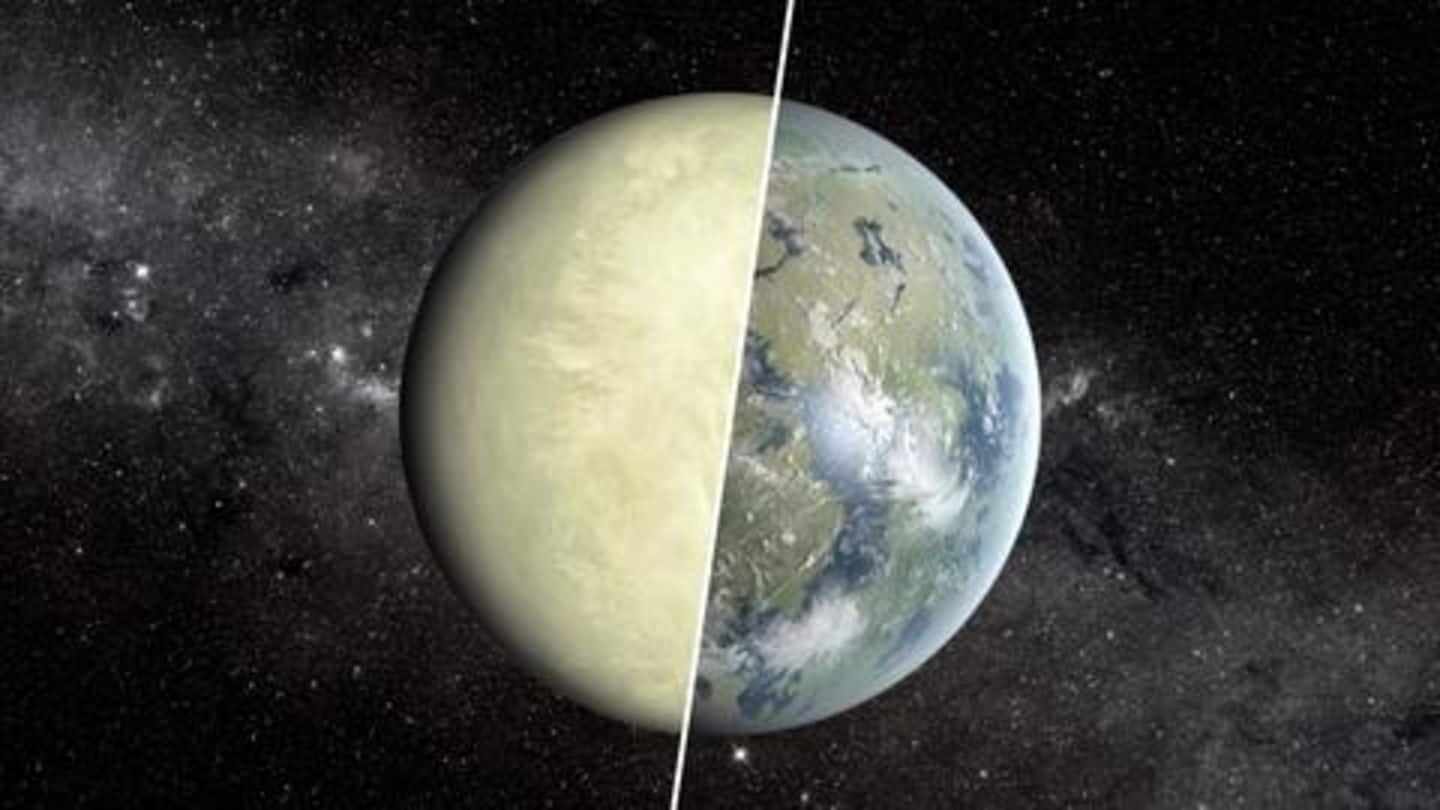
Venus was Solar System's 'first habitable planet'. Here's what happened
What's the story
Planet Venus often gets branded as Earth's evil twin; how despite sharing similar sizes, density, and chemical makeup, Venus is a Hadean reflection of Earth. However, did you know that Earth and Venus are more similar than it might seem? Venus hasn't always been the infernal rock it is today, but once was a habitable world with vast oceans that could harbor life.
Details
Venus had all the right properties to support life: Physicist
With its 500°C surface temperature and atmospheric pressure 92 times that of Earth, Venus is unsurvivable, but it wasn't always like that. Reiterating what scientists have been studying in the recent past, English physicist Brian Cox said on his BBC show, The Planets, that Venus once had all the right properties to support life. So, what happened? The sun.
Quote
'Venus was as pleasant as spring day on Earth'
Before the son got older, bigger and hotter (as stars do), Venus was "at just the right distance from the young Sun," Cox said. Taking us back by 3.5-4 billion years, Cox describes Venus' climate as "a pleasant spring day here on Earth." "The heavens opened and great torrents flooded the surface, rivers of water flowed and Venus became an ocean world," he added.
Quote
'Why are we investing time on Mars over Venus?'
Meanwhile, Darby Dyar, a planetary scientist, told Nature, "If that's the case, there was plenty of time for evolution to kick into action." Dyar asks, "Why are we investing so much time looking for life on Mars when it only had liquid water for 400 million years?" "There's Venus with three billion years of water and no one loves her," she added.
Information
How does Venus supporting life eons ago help us now?
Well, quite simply put, decoding and understanding how Venus turned from possibly the Solar System's first habitable planet to what can only be described as hell today, could help researchers better hunt for rocky planets across the Galaxy that could sustain life.
Missions
Interestingly, ISRO is planning a mission for Venus in 2023
To note, scientists are using tech to tackle Venus' sulfuric acid clouds, extreme temperatures, and pressure, and launch missions to Venus- Indian Space Research Organization being first in queue. Announced last year, the ISRO mission is scheduled for a mid-2023 launch. After India, US missions Veritas and Davinci in 2025, European Space Agency mission in 2032, and a US-Russia mission between 2026-2033, could follow.
Quote
I am thrilled that ISRO is doing this, says Dyar
Speaking about the ISRO 2023 mission to Venus to Nature, Dyar said, "I am thrilled that ISRO is doing this." She added, "I am thrilled that the international community is taking note of Venus and proposing missions. That is fantastic."
Titan
Solar System has other candidates for habitable life
Dr. Cox said that life could someday thrive on Saturn's moon Titan- Earth's "strange cold twin." "We've found molecules like hydrogen cyanide, which is the building block of amino acids, we found molecules called vinyl cyanide, which chemists and biologists speculate could form some sort of cell membranes," he said. "And so all the ingredients for life are present on Titan," he added.
Future
Isn't Titan too cold to be habitable?
Cox added that Titan (at -180°C) is too cold right now. However, if warmed up, it could support life. How does that happen? The same way Venus became inhabitable. The sun, which will, roughly 5.5 billion years later, become a red giant, engulfing Mercury, Venus and even Earth. And so, someday, perhaps the Sun would become hot enough to thaw out life on Titan.